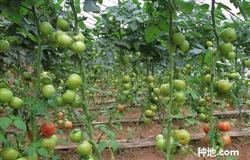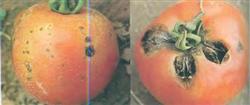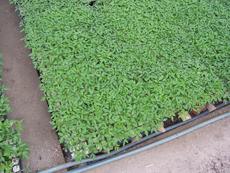How to fertilize Tomato after planting

How to fertilize tomato after planting? As an important vegetable in daily life, tomato is not only delicious and delicious, but also rich in nutrition. However, due to the current defects in planting management, there are a variety of diseases in tomato during the growing period. How to fertilize cucumbers and tomatoes in greenhouse according to different growth stages of cucumbers and tomatoes, cucumbers and tomatoes should absorb normal nutrients at seedling stage, the amount of fertilizer should be less and the concentration should be low; in the full fruit stage, the amount of fertilizer should be larger and the concentration should be higher. Some farmers use 200 kilograms of diammonium phosphate at a time, so it is unscientific to obtain high yield by using diammonium phosphate alone. For tomato cultivation, it is better to select the soil with deep soil layer, loose and fertile soil, strong water and fertility conservation and rich organic matter in tomato cultivation. Tomatoes avoid dampness and are afraid of drought, so choose fields with higher terrain, ventilation, no stagnant water and convenient drainage and irrigation. Tomato cultivation in open field with high yield and high efficiency fertilization often leads to tomato plant weakness and malformation due to uncoordinated fertilization time or lack of phosphorus and potassium, which leads to the adverse consequences of low yield, poor quality and reduced cultivation efficiency. Tomato rational fertilization irrigation tomato root system is developed, growing vigorously, is a fertilizer-tolerant, semi-drought-tolerant, non-waterlogging-tolerant crop. Organic fertilizer is the best fertilizer. Generally, more than 1000 kg of farm manure such as pig and cow manure, 1 kg of borax, 50 kg of peanut bran and 50 kg of compound fertilizer are used per mu. The characteristics of fertilizer requirement of tomato were that the nutrient uptake of tomato was different in different growth stages, and the nutrient uptake increased with the growth and development of the plant. Nitrogen was mainly absorbed in the seedling stage, and the demand for phosphorus and potassium increased with the thickening and growth of the stem. At the beginning of the result, nitrogen accounted for 50% of the three main nutrient elements (nitrogen, phosphorus, potassium). Potassium accounts for only 32%. Click to get more tomato planting techniques click to get more vegetable planting techniques
- Prev

How to Control Tomato seed Diseases and pests
How to control tomato seed diseases and pests? Please introduce the general diseases of tomato seeds as follows: (1) Tomato flower skin disease, which is a physiological disease, which is also called tendon rot or stripe rot or with rot, which mainly harms the fruit. One is browning: cutting open the diseased fruit.
- Next

How to raise Tomato seedlings
How to raise tomato seedlings? Please introduce how to guide tomato Greenwood cuttage is a way of asexual propagation by using side branches on mature tomato plants that have blossomed and bearing fruit. After nearly three years of practice, it has been realized that there are three major benefits: first, it can save seed investment. Especially the expensive imported varieties.
Related
- Where is it suitable to grow horseradish in China? it is expected to see the middle altitude horseradish in Alishan.
- How to prevent tomato virus disease reasonably? (Control methods included)
- Many people like to plant towel gourd on the balcony. What are the main points of this method and management?
- What crops can chili peppers be mixed with?
- Fertilization techniques and matters needing attention in Tomato
- What are the grafting techniques for peach seedlings in spring?
- Harm and control methods of root swelling disease of Chinese cabbage
- What are the pests of sweet potatoes? How to prevent and cure it?
- Symptoms, causes and Control methods of navel Rot in Tomato
- The cause of "Cucumber rotten bibcock" in Farmers' planting Cucumber and its Control Plan

